BUDDHIST SITE

You arrive at a temple with no roof. Only water.A quiet path leads you between concrete walls, the world fading to a hush. Ahead: an oval lotus pond reflecting sky like a held breath. A single cut through the water invites you down. Step by step, you descend—leaving noise, heat, and hurry on the surface. Light thins. Air cools. Footsteps slow. Below the pond, a circle of vermilion glows. Timber lattice shimmers with soft daylight, as if filtered through the lotus above. This is Tadao Ando’s Honpukuji—The Water Temple—where the “roof” is a mirror and the threshold is a descent.Once upon a time on the island of Awaji, Japan, a quiet hill watched over the inland sea. It was here that Tadao Ando, the poet of concrete and light, chose to build not just a temple — but an experience of meditation through architecture. As you approach Honpukuji, there are no grand gates or towering pagodas. Instead, you face a serene oval lotus pond, perfectly still, reflecting the sky above. You might think the temple lies beyond it — but no — it lies beneath.A narrow staircase cuts through the pond, guiding you downward, deeper, into the silence. The further you go, the quieter the world becomes. Concrete walls embrace you, leading to a wooden sanctuary glowing in dim, sacred light.Here, water and faith intertwine. The pond above filters sunlight into gentle ripples below, casting moving shadows over the red interior. Every step is a meditation. Every wall, a pause for breath. Ando doesn’t ask you to simply look at architecture — he invites you to feel it. To descend into yourself, to find calm beneath the surface noise of the world. It’s not just a temple. It’s Tadao Ando’s whisper to the soul: "Only when you go beneath the surface do you find peace."
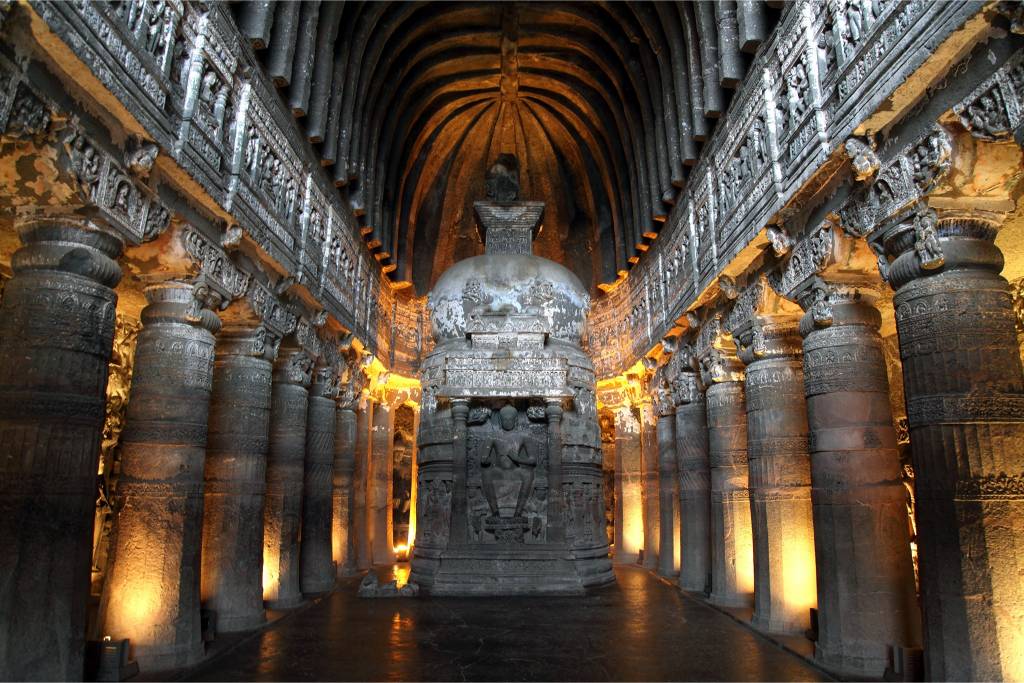
Ajanta Caves: A Timeless Journey Through Ancient Art and Architecture https://www.p4panorama.com/360-virtual-tour/ajanta-caves (for 360 degree views) Nestled in the heart of India, the Ajanta Caves stand as an awe-inspiring testament to the brilliance of ancient architecture, art, and spirituality. These rock-cut wonders, carved into the cliffs of the Waghora River gorge, date back to the 2nd century BC and stretch through to the 6th century AD, offering a breathtaking journey through time.The Ajanta Caves are more than just an architectural marvel—they are a spiritual haven and a canvas for ancient artists who poured their creativity and devotion into every inch of these sacred spaces. A UNESCO World Heritage Site since 1983, the caves continue to mesmerize and inspire millions of visitors from around the world. The 30 caves are a remarkable blend of Buddhist sanctuaries, monastic living quarters, and grand shrines. The caves were primarily used by Buddhist monks as places for meditation and worship. They are divided into two main periods: the earlier Hinayana phase, marked by simplicity and restraint, and the later Mahayana phase, which saw the flourishing of intricate sculptures and vibrant paintings.The most captivating feature of the Ajanta Caves is their breathtaking murals, which cover the walls of several caves. These paintings depict vivid scenes from the life of the Buddha, the Jataka tales, and the everyday life of the people of ancient India. The detailed depictions, some of which are over 1,500 years old, showcase incredible skill and an understanding of human emotions and expressions that still resonate with viewers today.Equally striking are the statues and sculptures that adorn the interiors of the caves. These include serene depictions of the Buddha in various postures, alongside other divine figures and intricate carvings that narrate religious stories.If you’re an art lover, history enthusiast, or simply curious about the treasures of ancient India, the Ajanta Caves offer an unparalleled glimpse into the artistic and cultural legacy of a bygone era.
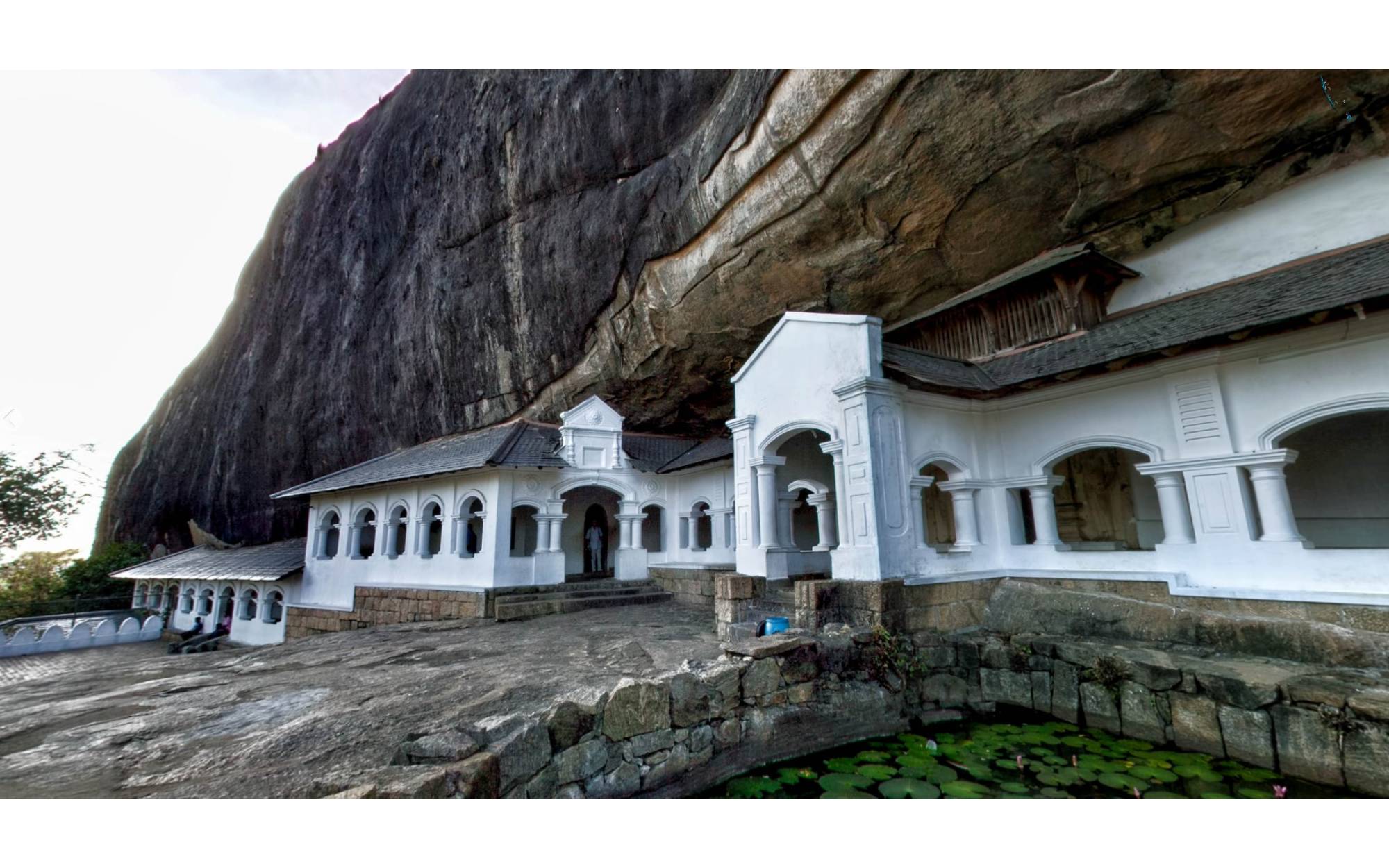
Dambulla Cave Temple: Sri Lanka’s Sanctuary in Stone Rising from Sri Lanka’s dry plains, the golden rock of Dambulla conceals a masterpiece of faith and endurance. Within its shadowed chambers lies the Dambulla Cave Temple, a UNESCO World Heritage Site and one of Asia’s most breathtaking monastic sanctuaries. The story begins over 2,000 years ago, when King Valagamba of Anuradhapura, dethroned and in exile, sought refuge in these very caves. Sheltered by monks through years of hardship, he vowed to honor their compassion. When he regained his throne, he transformed his former hiding place into a temple — carving gratitude into the heart of stone. Today, visitors climb the steep path to discover five sanctuaries hewn from rock, their walls alive with ancient murals and over 150 Buddha statues, each shimmering under flickering lamplight. The largest cave, the Maharaja Vihara, holds a golden serenity that has endured through centuries of devotion and dynastic change. From the temple terrace, the view stretches across Sri Lanka’s Cultural Triangle, where history and myth blur into one timeless horizon. In Dambulla, every statue, every painted ceiling, every whisper of incense carries the same message — that faith, like stone, endures. https://www.p4panorama.com/panos/dambulla (for 360degree views)
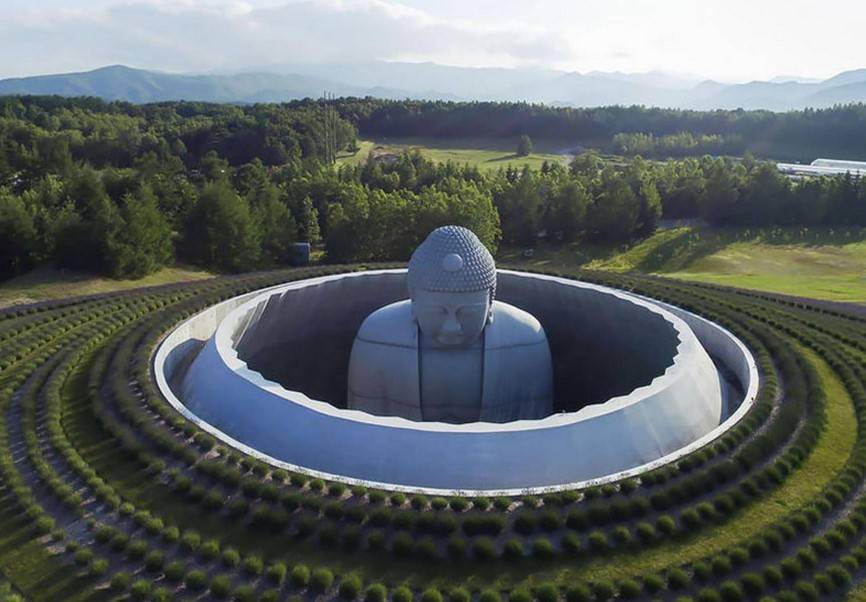
Hill of the Buddha is a Buddhist shrine designed by architect Tadao Ando in makomanai Takino Cemetery in Sapporo, Japan. Since its establishment in 1982, the cemetery is well known for the row of moai megaliths. Although it is a Buddhist shrine, the statue or the place is not associated with the religion. Furthermore, with every step revealing a tiny portion of the figure, it plays on the aspect of mystery. Thus, mounds of lavender fields surround the shrine, with only the head visible from the entrance. Name: Hill of the Buddha (仏の丘 / Hotoke no Oka) Location: Makomanai Takino Cemetery, Sapporo, Hokkaido, Japan Architect: Tadao Ando Completed: 2015 Function: Spiritual and contemplative space, centralizing an existing statue of Buddha within a newly designed landscape and structure.
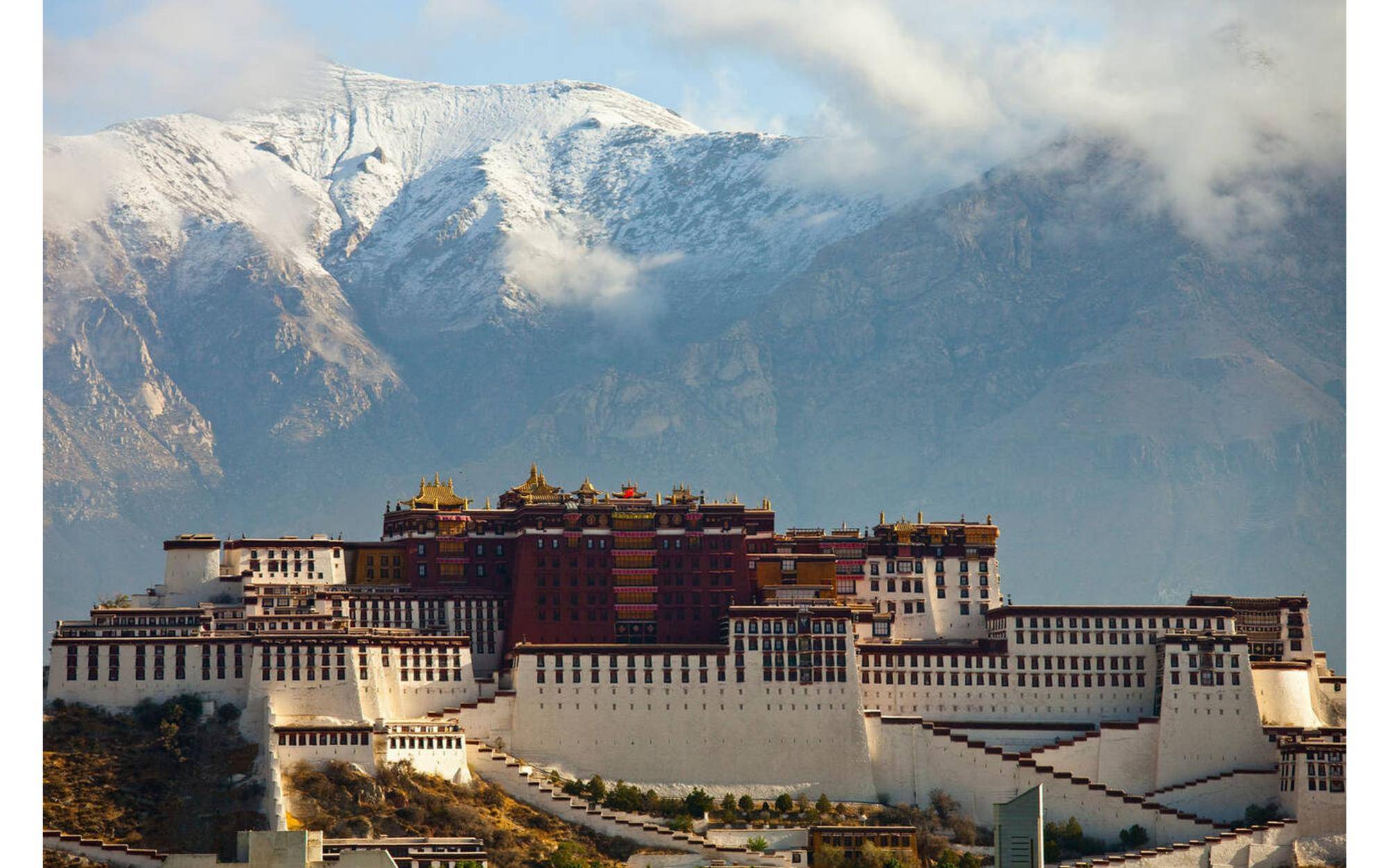
The Potala Palace is one of the most iconic landmarks in Tibet, both historically and architecturally. Located in Lhasa, the capital city, it sits at an altitude of 3,700 meters (12,100 feet) on Marpo Ri, or "Red Hill," dominating the skyline with its striking white and red walls. It’s a UNESCO World Heritage Site SINCE 1974 and a powerful symbol of Tibetan Buddhism and cultural identity.This 7th-century palace proves that beauty, durability, and sustainability can go hand in hand.
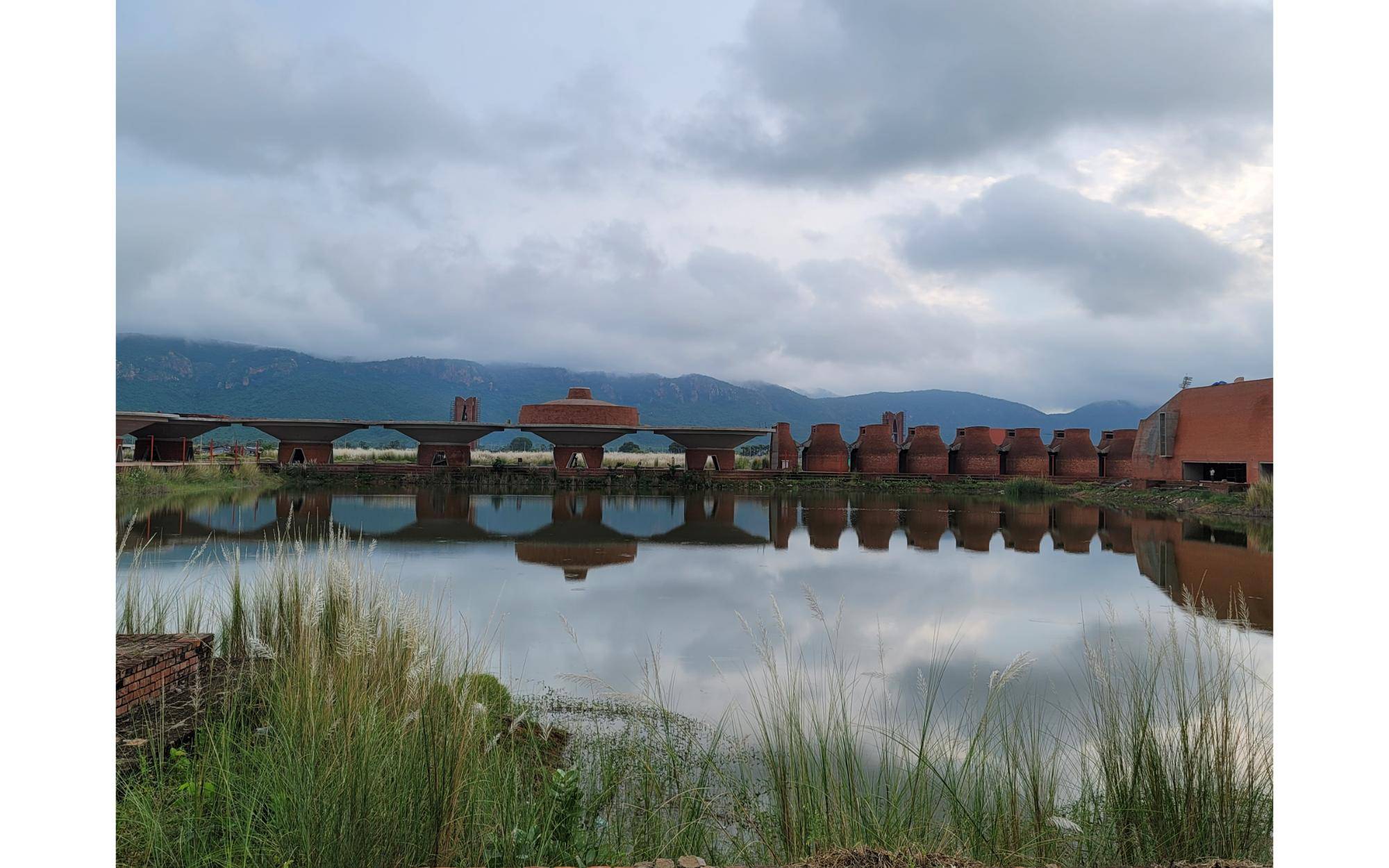
The new campus of Nalanda University in Bihar is a modern revival of one of the world's oldest centers of learning. Located in Rajgir, about 12 kilometers from the ruins of the ancient Nalanda Mahavihara, the new campus aims to blend historical legacy with modern sustainability and global academic standards. The new campus of Nalanda University is not just a physical revival—it’s a cultural and intellectual resurrection of a once-glorious institution. With its sustainable design, international vision, and deep historical roots, it stands as a bold statement of what modern Indian higher education can aspire to be: inclusive, global, and grounded in wisdom.
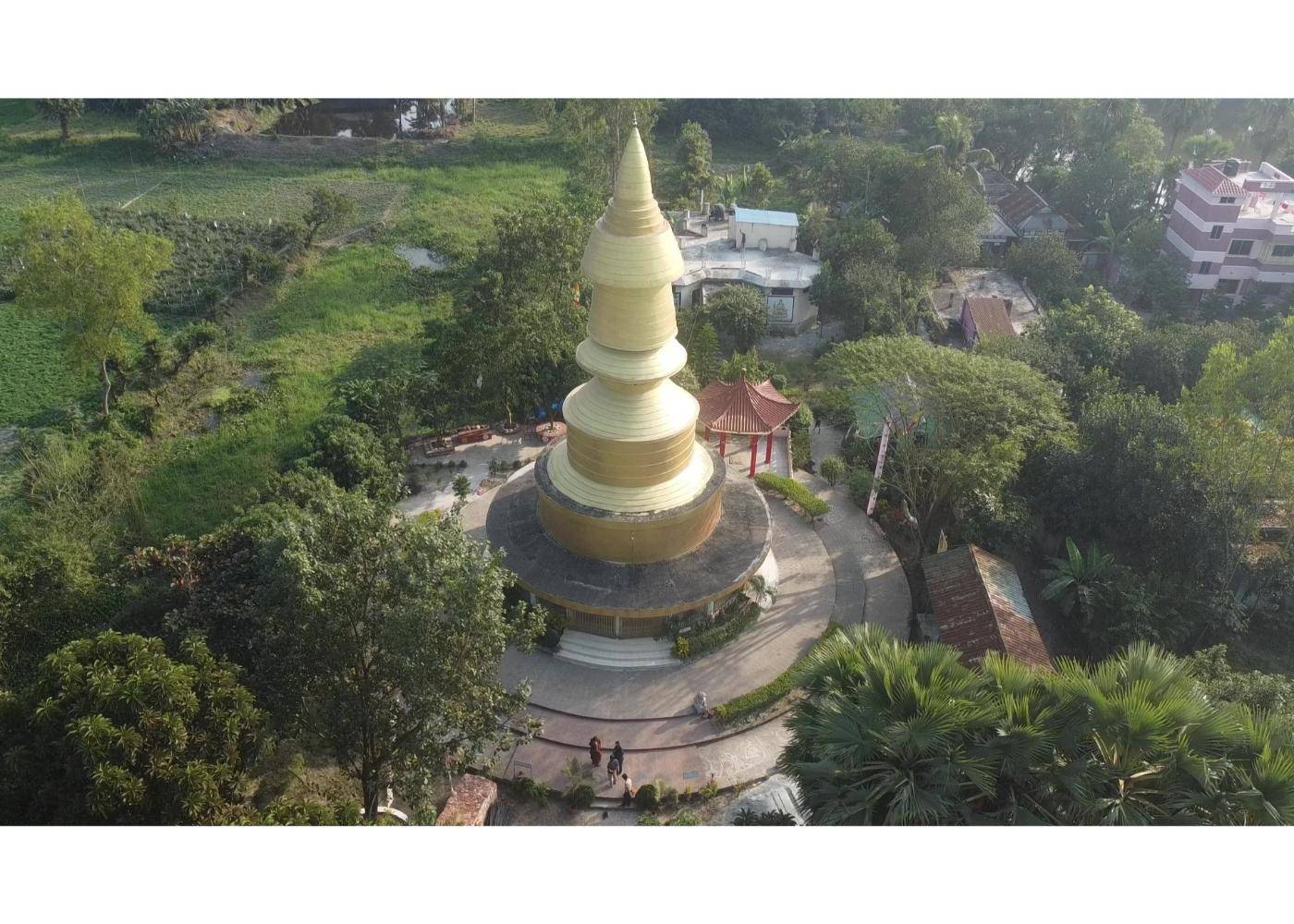
The Atish Dipankar Memorial Complex, situated in Bajrajogini, Munshiganj, Bangladesh, is a poignant tribute to Atish Dipankar Srijnan, a revered 11th-century Buddhist scholar and missionary. Born in this region, Atish played a pivotal role in revitalizing Buddhism in Tibet, earning the title "Second Buddha" among Tibetans. His journey to Tibet in 1040 AD marked a significant chapter in Buddhist history, where he spent 17 years disseminating Buddhist teachings, integrating sutra and tantra, and authoring influential texts like "A Lamp for the Path to Enlightenment" before his passing in 1054 AD . In an age where cultural identity is often contested or forgotten, the Atish Dipankar Memorial Complex reclaims a legacy of tolerance, scholarship, and transnational influence. It’s a reminder that Bangladesh has always been a crossroads of civilizations, philosophies, and ideas. By honoring Atish Dipankar, the complex not only preserves history—it inspires new generations to pursue knowledge, compassion, and understanding.
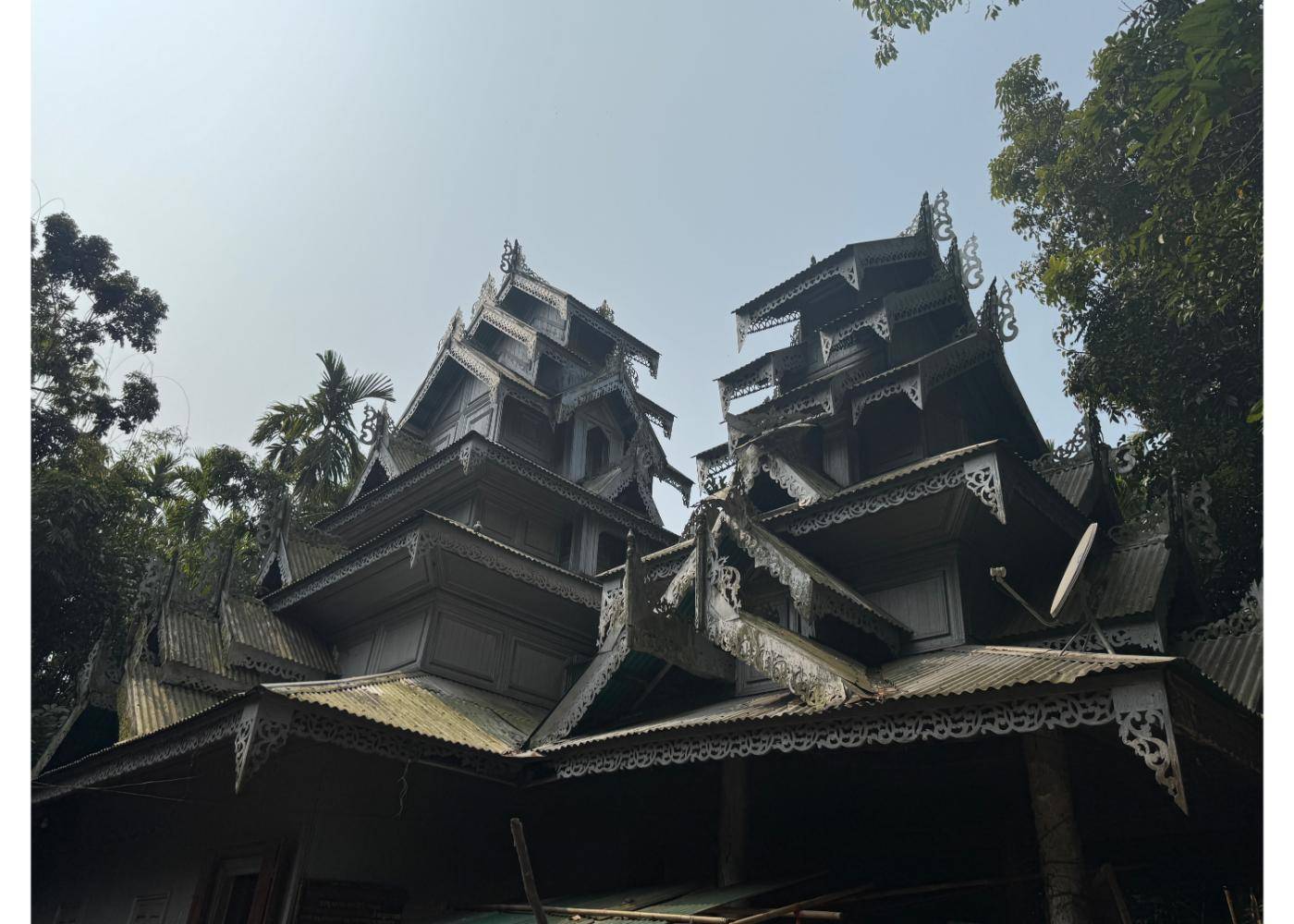
Lamar Para Buddhist Temple – A Quiet Spiritual Landmark Lamar Para Buddhist Monastery, also known as Lamar Para Khiang, is a historic Buddhist temple and monastery located in the Ramu sub-district of Cox’s Bazar, Bangladesh. Lamar Para Buddhist Monastery is more than just a religious site – it is a symbol of our shared history, values, and commitment to peace. Let us unite to ensure that it remains a beacon of hope, education, and spiritual guidance for generations to come. Together, we can protect this precious gem of our cultural heritage.Situated on the banks of the Bakkhali River in Fatekharkul Union, it is approximately 1 km south of the Ramu Chaumuhani Bus Stand .Despite its importance, Lamar Para Buddhist Monastery is now at risk due to [list of threats – e.g., encroaching development, lack of funding, environmental damage]. These challenges endanger the preservation of this sacred space, its community, and its cultural impact for future generations. Why It Matters In a world where religious monuments often become tourist attractions, the Lamar Para Buddhist Temple stands apart. It isn’t a spectacle—it’s a living part of a community’s daily life. It reflects how Buddhism survives and adapts in rural Bangladesh, away from the spotlight, yet full of meaning.
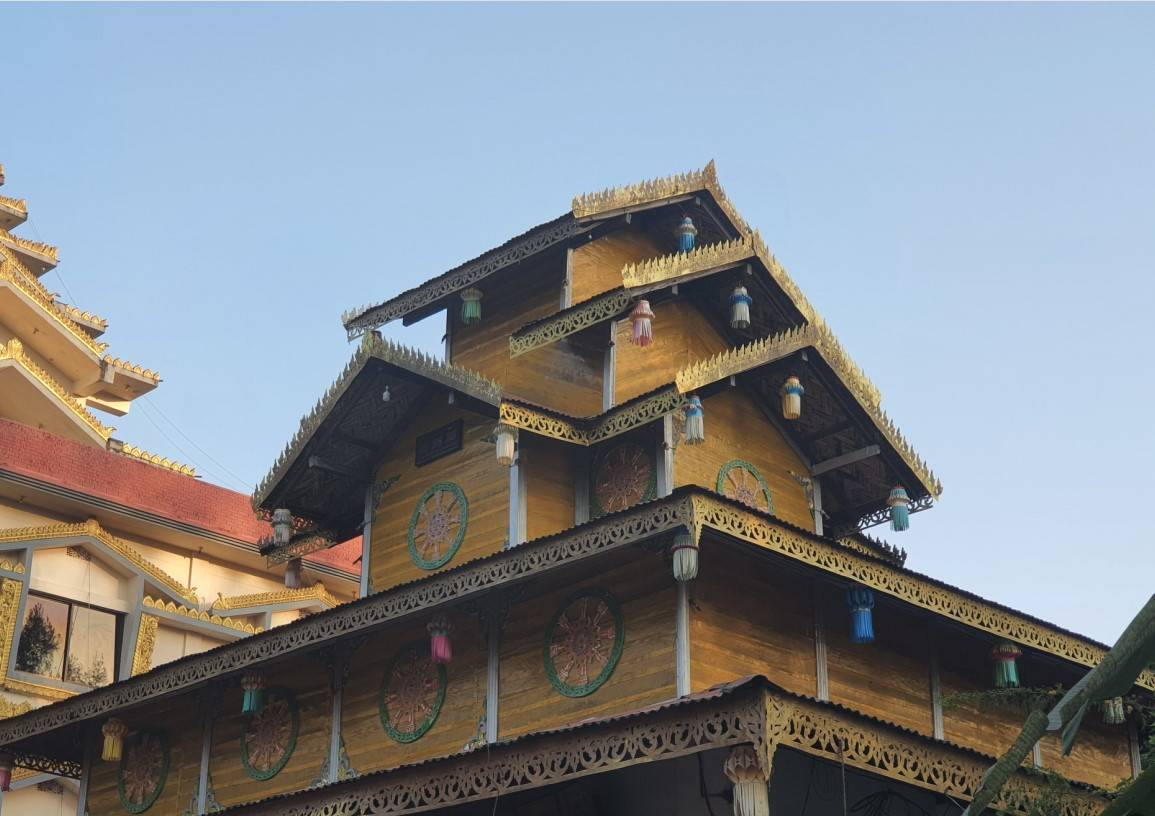
Ujanipara Buddha Vihar is a significant religious and cultural landmark located in Bandarban, a hill district in southeastern Bangladesh. It is a sacred Buddhist monastery that serves as a center of spiritual practices, religious education, and community life for the local Marma and other indigenous Buddhist communities. The vihar is nestled in the tranquil hills of Ujanipara village and reflects traditional Buddhist architecture, serene surroundings, and the rich cultural heritage of the hill tracts. Documentation on Ujanipara Buddha Vihar is limited, with most historical knowledge preserved orally. Efforts to maintain the site likely involve local custodians and religious leaders, highlighting its importance as a cultural heritage asset amid modernization pressures.Ujanipara Buddha Vihar stands as a testament to the spiritual and cultural resilience of Bandarban’s Buddhist community. Its history, though not extensively recorded, is woven into the broader narrative of the Marma people and their enduring Buddhist traditions in the CHT. The vihar remains a beacon of peace and cultural identity in this ethnically diverse region.
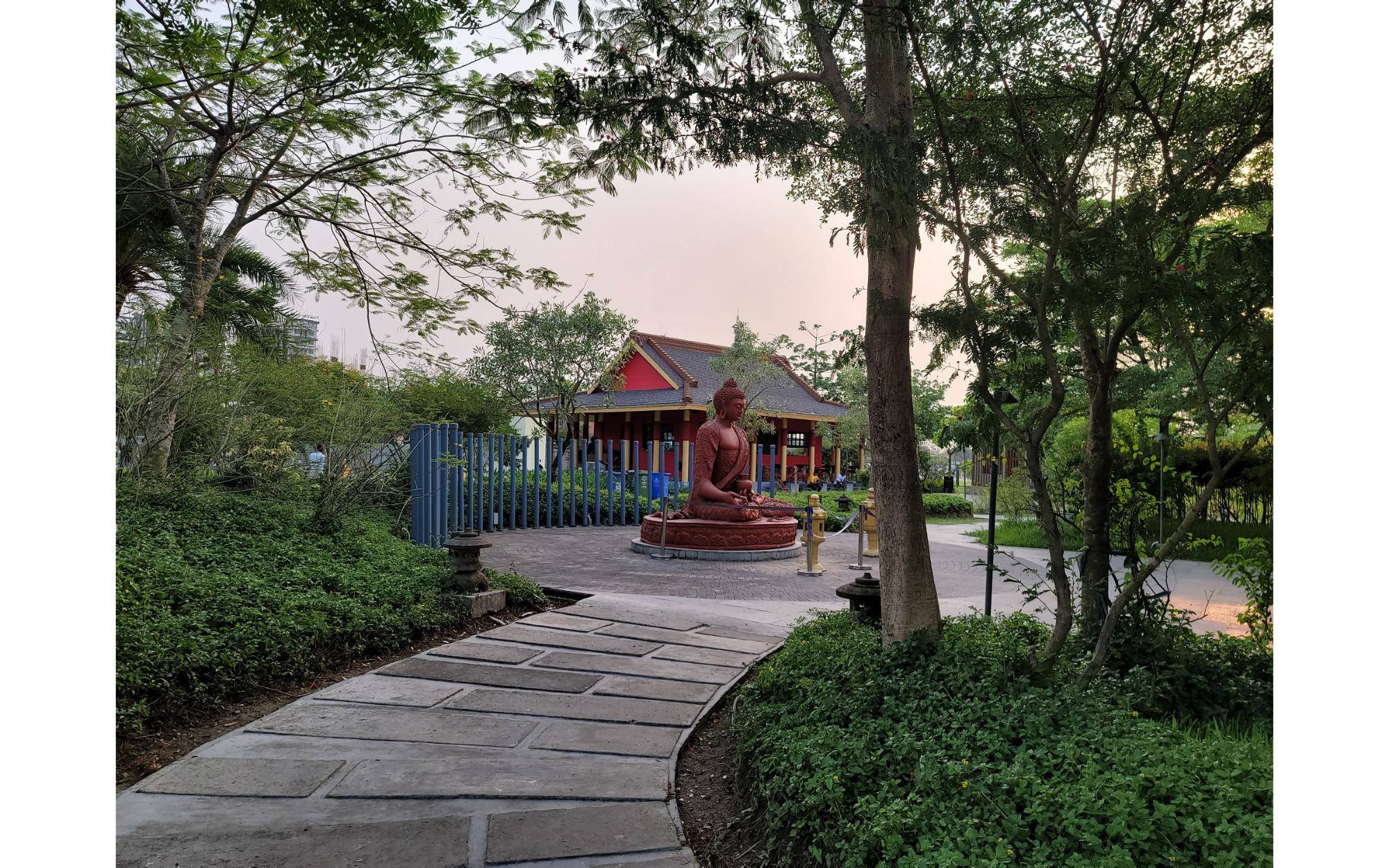
The Japanese Forest within Eco Park in New Town, Kolkata, is a serene enclave that transports visitors to a miniature version of Japan. Developed by the West Bengal Housing Infrastructure Development Corporation (HIDCO), this 3.5-acre area is situated adjacent to the central lake of Eco Park. The inception of this forest was influenced by the discovery of an ancient Buddha sculpture during the park's development, inspiring the creation of a "Monastery in a forest" theme. Spanning 3.5 acres beside the central lake of Eco Park, the Japanese Forest is inspired by traditional Japanese garden principles, emphasizing harmony with nature, simplicity, and spiritual reflection. The design integrates elements of Shinto and Buddhist philosophies, creating a space that engages the five senses and promotes mindfulness
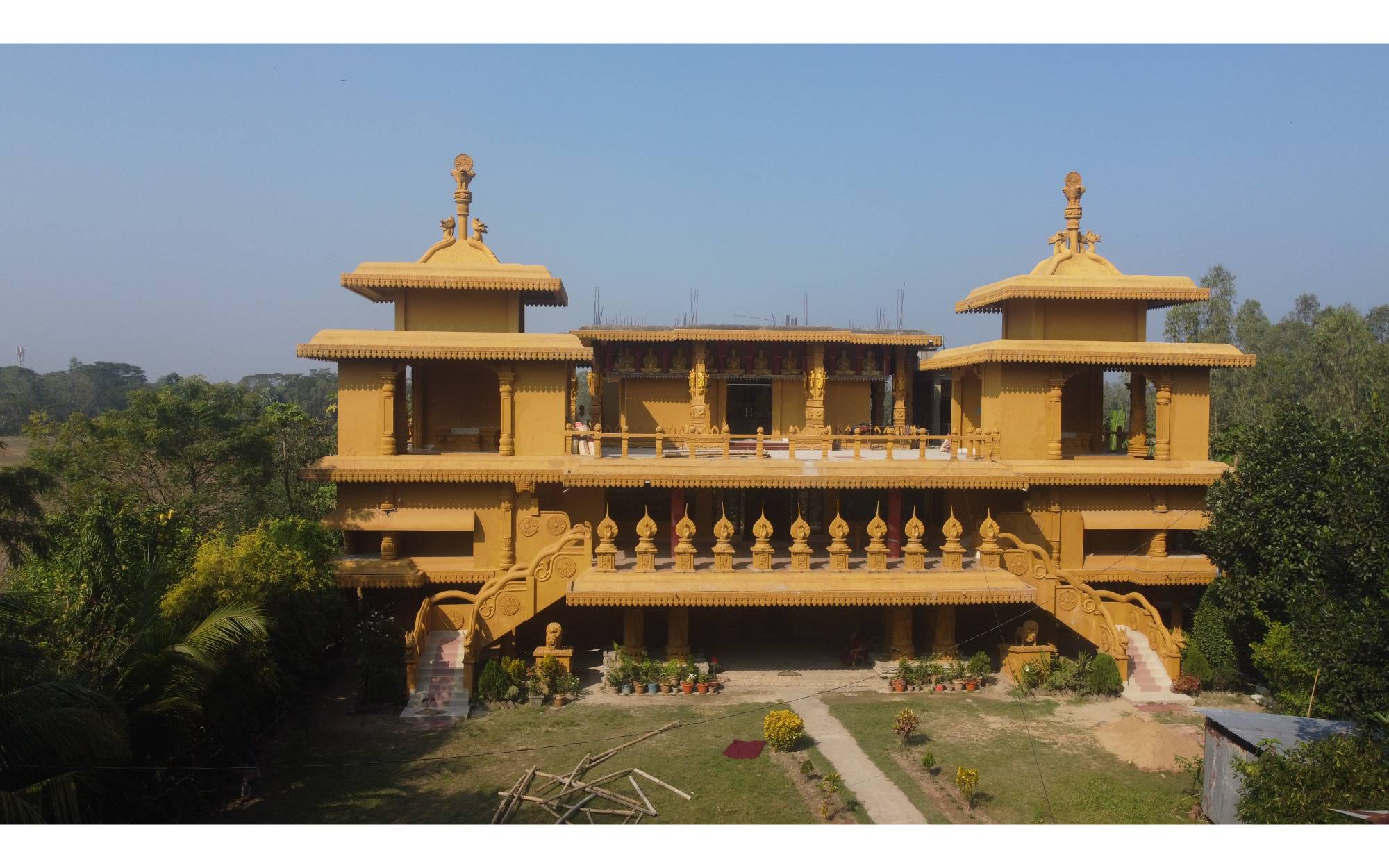
The Damdama Nababpur Dharmakirti Buddhist Monastery, situated in the Mirsarai Upazila of the Chittagong district (now Chattogram) in Bangladesh, stands as a testament to the region's rich Buddhist heritage and architectural splendor.
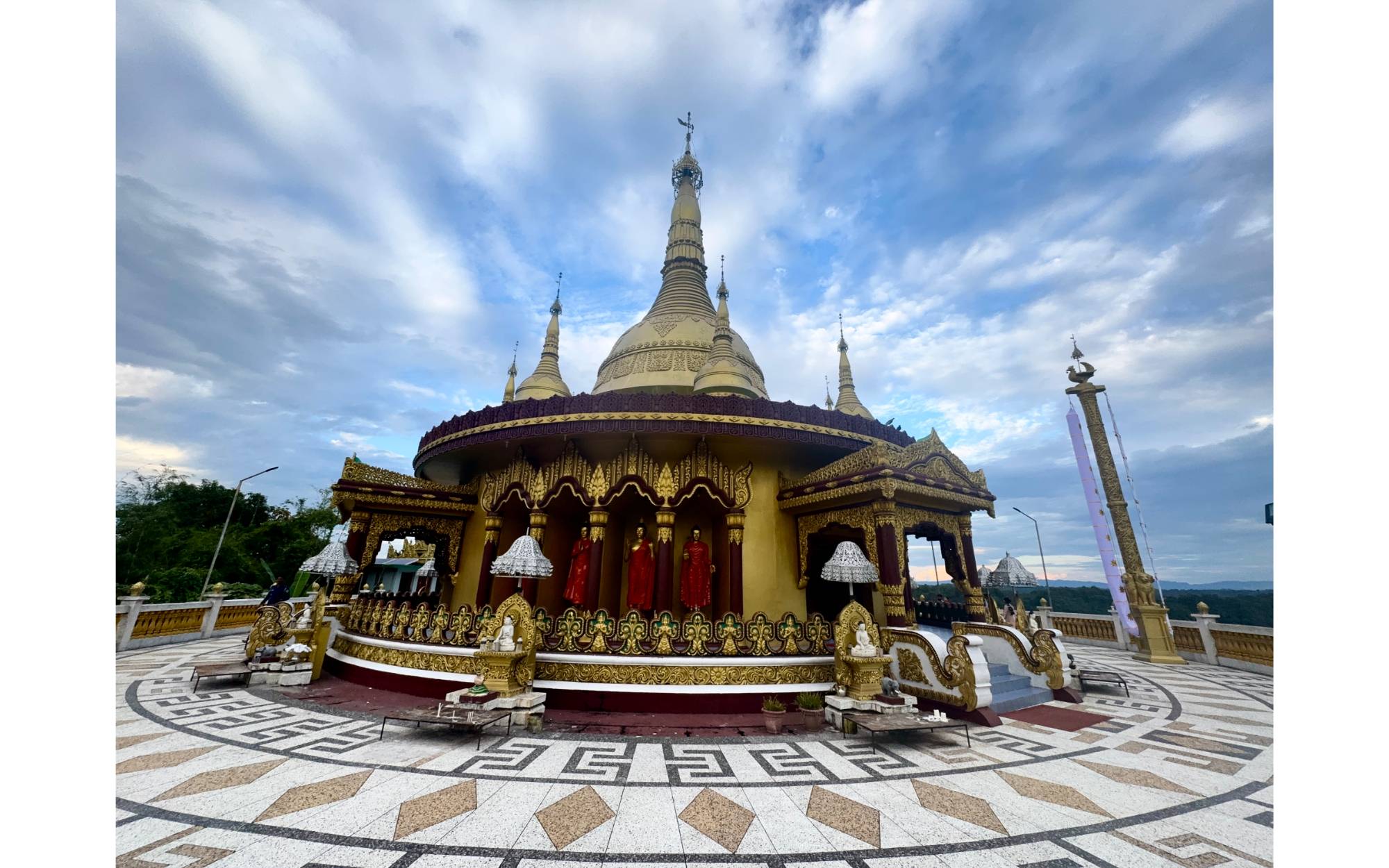
Nestled amidst the verdant hills of southeastern Bangladesh, the Golden Pagoda, officially known as Buddha Dhatu Jadi, stands as a testament to the country's rich cultural tapestry and religious harmony. Situated in the Balaghata area, approximately 4 kilometers from Bandarban town, this majestic temple is not only a place of worship but also a symbol of peace and serenity for both devotees and tourists alike. The Golden Pagoda of Bandarban stands as a beacon of spiritual enlightenment, architectural beauty, and cultural heritage. It continues to inspire awe and reverence among all who visit, offering a glimpse into the rich traditions of Theravada Buddhism and the enduring spirit of the Marma people. As it welcomes visitors from around the world, the Golden Pagoda remains a symbol of peace, unity, and the timeless pursuit of wisdom.
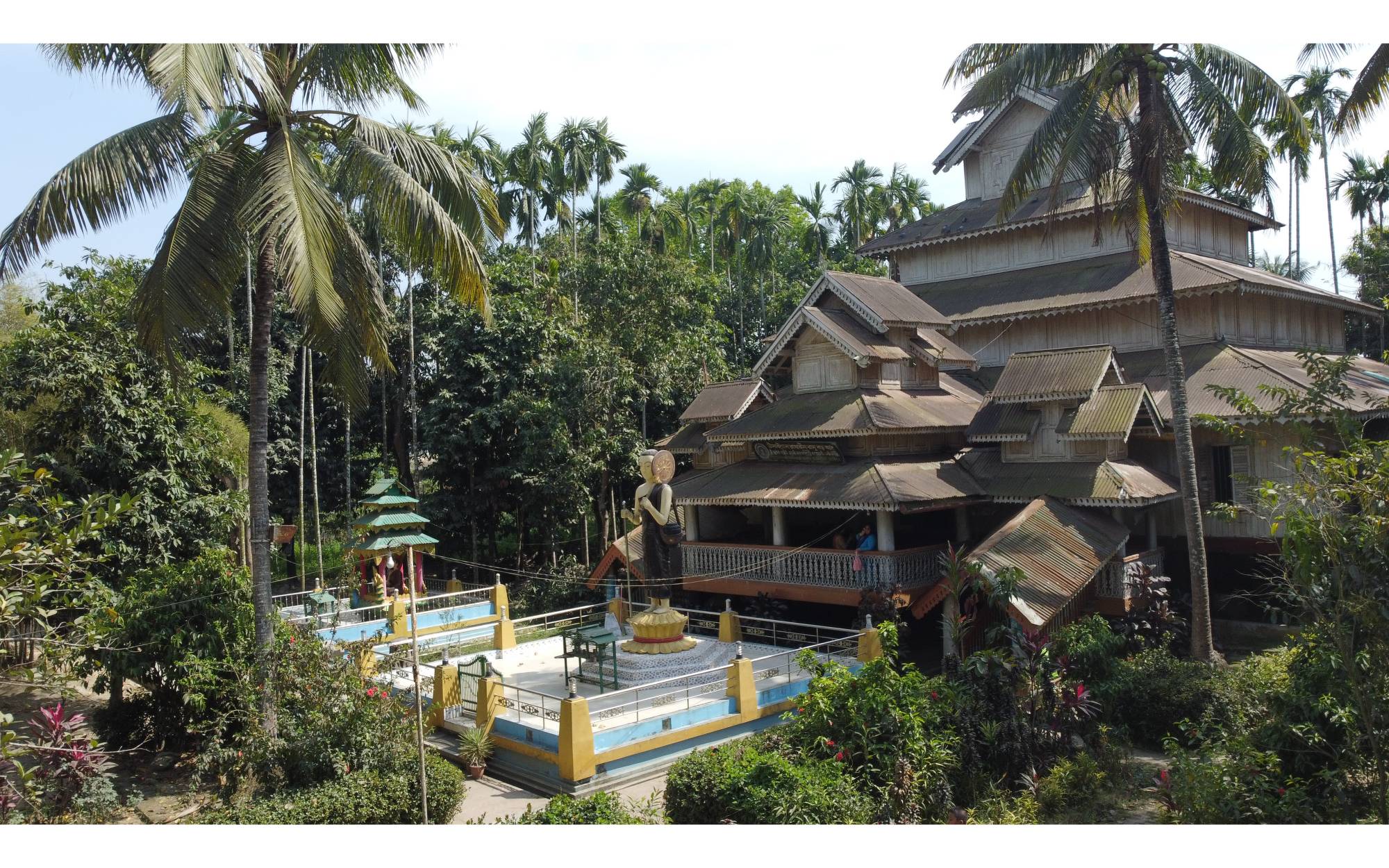
The U Chit San Rakhine Wooden Buddhist Temple, located in Ramu, Cox’s Bazar, Bangladesh, is an iconic site steeped in history, culture, and religious significance established in 1885. Known locally as a part of the Rakhine Buddhist heritage, the temple embodies the unique architectural style and religious practices of the Rakhine community, an ethnic group originally from Myanmar with a significant presence in Bangladesh. This temple is a testament to the artistry of Burmese-inspired wooden architecture and has stood as a spiritual center for the Rakhine Buddhist community for decades.
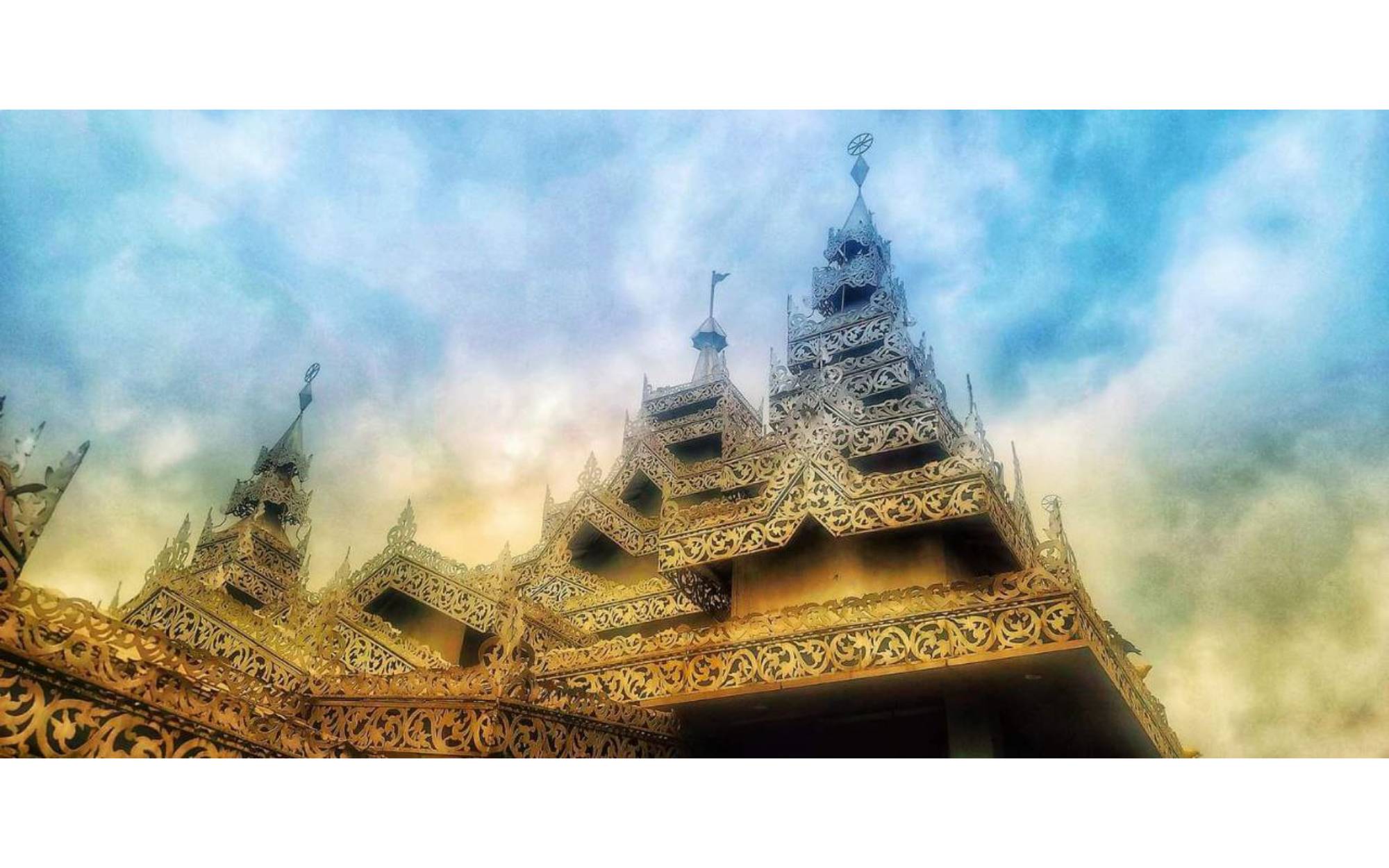
Rajban Vihar, also known as the Rajbana Vihara, is a prominent Buddhist monastery located in Rangamati, Bangladesh. Established in 1977, the monastery was built under the guidance of the late Ven. Shrimath Sadhanananda Mahathera, commonly known as the "Banabhante" (meaning "the forest monk"), a revered monk in the Chakma community. His vision was to create a serene sanctuary for Buddhist monks and devotees in the natural beauty of the Chittagong Hill Tracts. The monastery was founded to provide a residence for the revered Buddhist monk, Venerable Sadhanananda Mahathero, commonly known as Bana Bhante. Born on January 8, 1920, Bana Bhante became a legendary figure in Bangladeshi Buddhism. In 1977, he moved to Rangamati from the Longadu region to live permanently at Rajban Vihar. His followers constructed the temple to accommodate him and his disciples The name "Rajban Vihar" translates to "the Royal Forest Monastery," which signifies its setting amidst lush forests and its spiritual importance to the local Chakma people. The monastery is an essential cultural and spiritual center for the Buddhist population in Bangladesh, particularly among the indigenous communities like the Chakma, Marma, and Tripura, who make up a significant portion of the population in the Hill Tracts. As one of the largest and most significant Buddhist monasteries in Bangladesh, it serves as a hub for religious teachings, meditation practices, and cultural events.
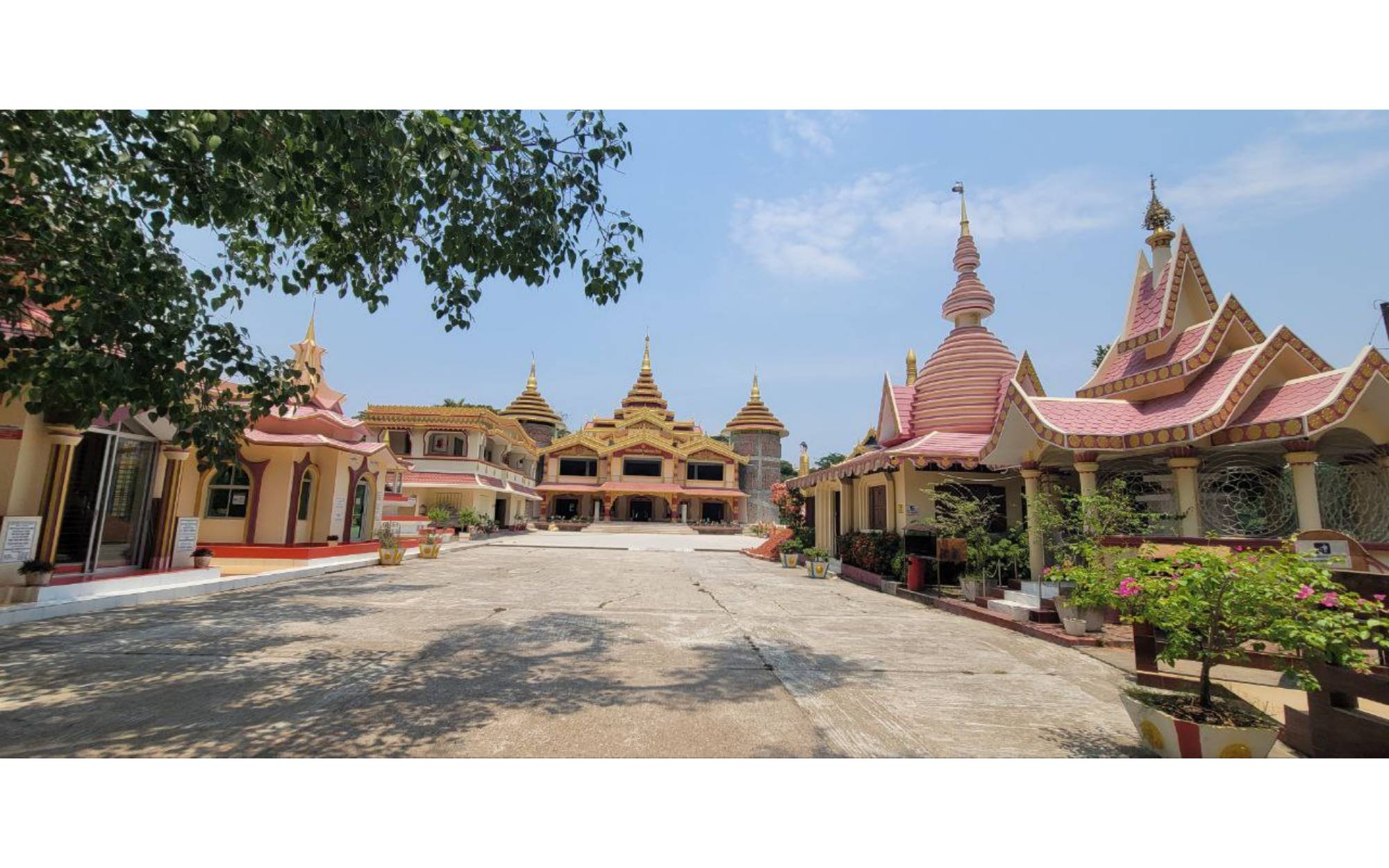
The Kartala Belkhain Saddharmalonkar Buddhist Temple, nestled in the scenic Patiya upazila of Chittagong, Bangladesh, stands as a prominent symbol of Buddhism in the region and holds great cultural and religious significance for the local Buddhist community. This historic temple, also known as Saddharmalonkar Vihara, is celebrated for its architectural beauty, tranquil atmosphere, and role as a spiritual center for the local community and visiting devotees. The village of Kartala, nestled within the pristine, serene environment of South Chittagong’s Patiya subdistrict and graced by the Karnaphuli River, lies in close proximity to the neighboring village of Belkhain. Despite being geographically distinct, these two villages have shared a unified cultural, traditional, and spiritual ethos since time immemorial, evolving with a collective vision and harmonious ideals, akin to two flowers in a single garland. Here, people of Hindu, Buddhist, and Muslim faiths have coexisted with mutual respect, tolerance, and empathy, upholding a spirit of secularism across generations. This unity is evident in joint educational and religious institutions such as the Kartala-Belkhain Mahabodhi High School, Kartala-Belkhain Government Primary School, and the Kartala Belkhain Saddharmalankar Monastery. The monastery, located in the southeastern corner of Kartala village within Ward 2 of Union 9, is set apart from populated areas per religious guidelines, surrounded by the natural beauty of lush, green landscapes and enclosed by sturdy boundary walls. Upon crossing the beautifully constructed Vangshadip Gate, visitors are greeted by a magnificent main building, modern in architectural design, alongside various structures like the Buddha Monastery, the Vangshadip Pavilion, the Paribhoga Chaitya, a Chaitya housing the Buddha’s five major disciples, the Monk Simaghar, Vangshadip Memorial Temple, the Gandhakuti Metal Chaitya, the Parinirvana Chaitya, a Musalinda Chaitya built over a pond, the Upagupta Bhante Chaitya, and the recently constructed Buddha Dhatu Chaitya. Each structure in the monastery embodies a refined architectural style akin to that seen in Buddhist regions worldwide, and it also includes a sacred Bodhi tree thriving amidst the serene surroundings. This complete monastery offers a profound sense of peace and tranquility to all who visit, filling their hearts with a pure and calming experience.
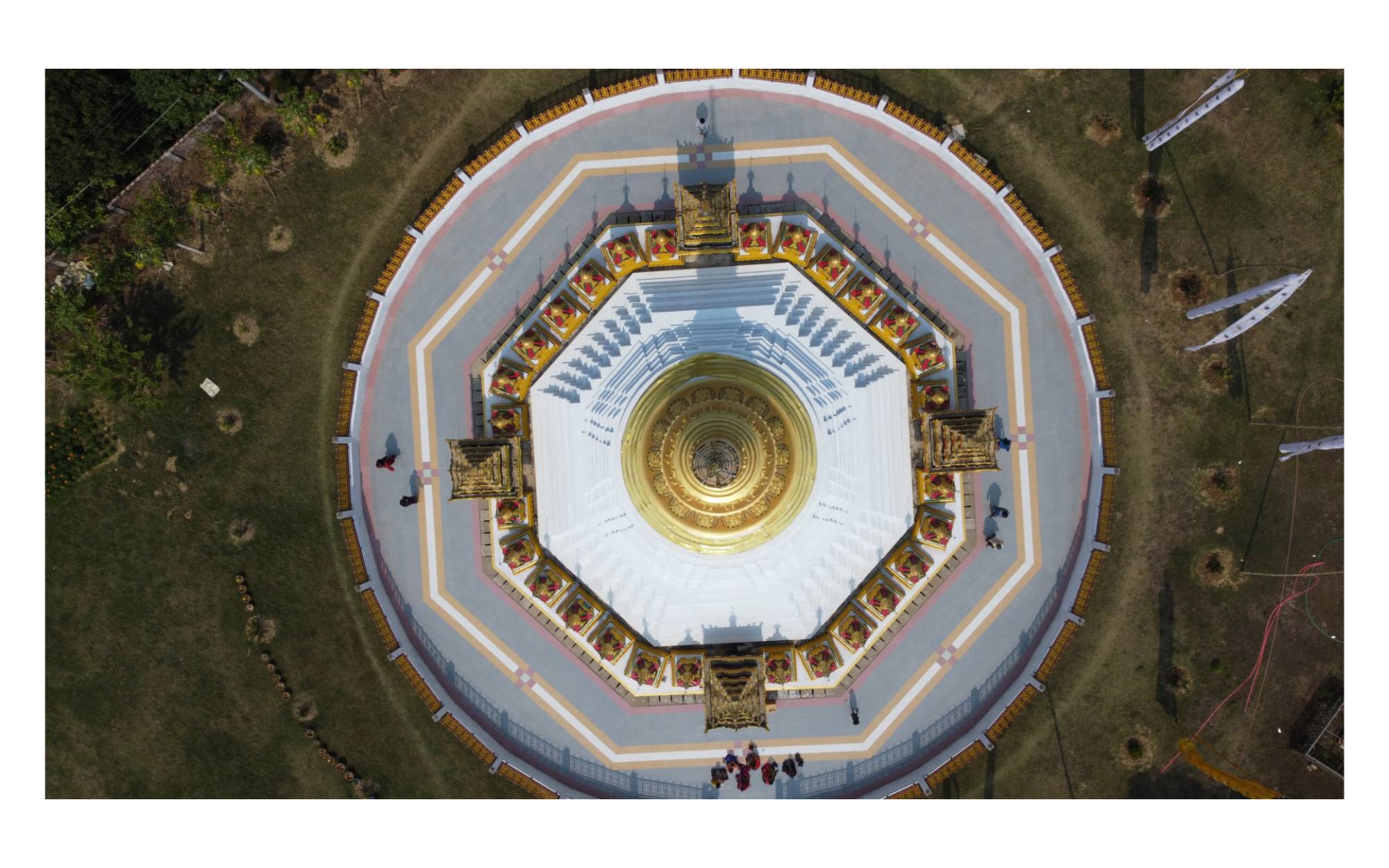
A unique architectural beauty of Buddha Dhatu Zadi createted by Venerable and Holiness U Pannya Jota Thera from the constuction period from 2008 to 2019. it is a magical interpretation of 28 Buddhas sorrounded by an octagonal Plan. The Keyamolong Buddha Dhatu Zadi, often referred to simply as the "Golden Temple," is a prominent Buddhist site located in Bandarban, Bangladesh. Nestled among the scenic hills and lush greenery of the region, this temple is a striking example of Theravada Buddhist architecture in Bangladesh and holds cultural, spiritual, and historical significance for both local and international visitors.
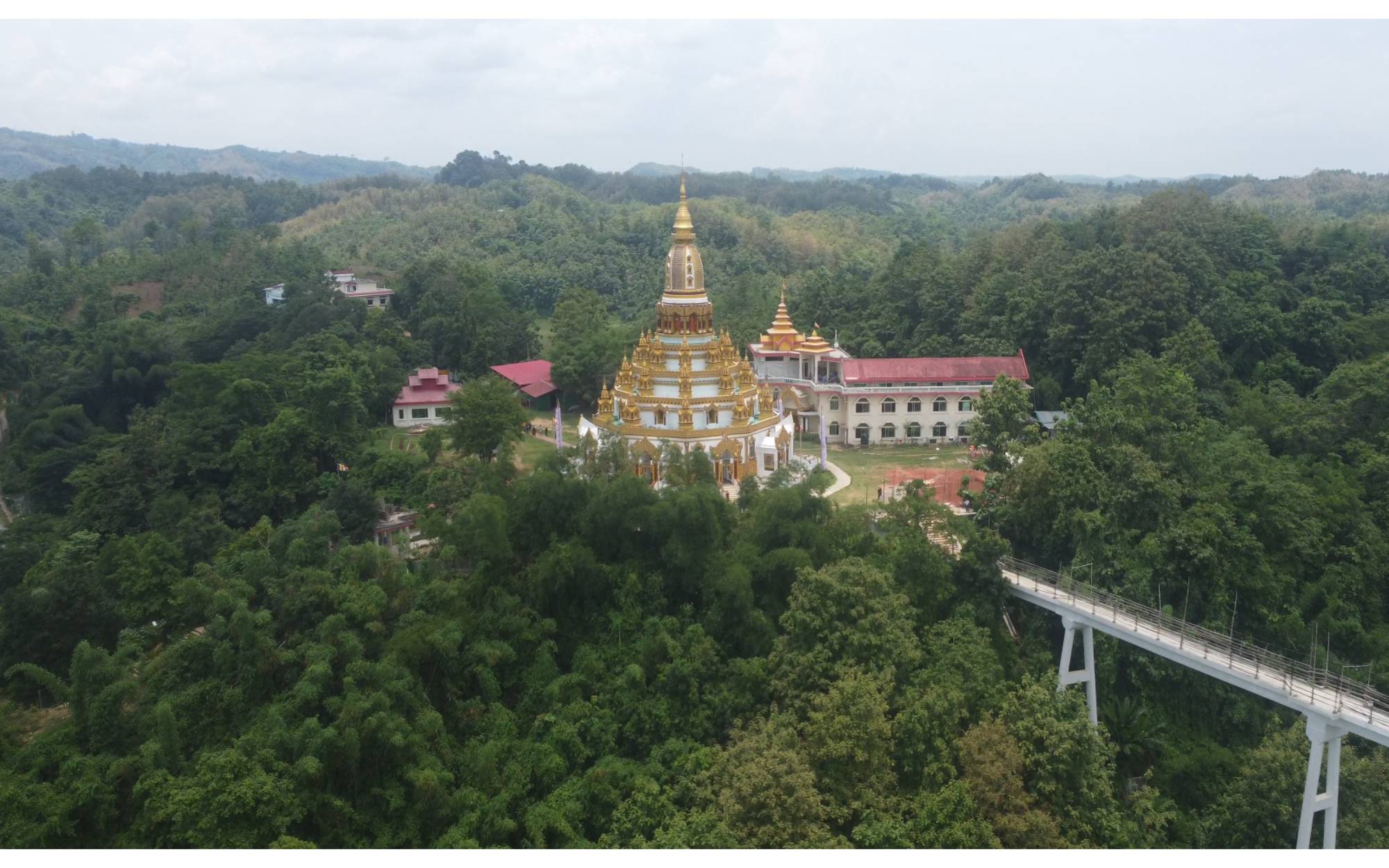
The Ram jadi Buddhist Temple, also known as the Golden Temple or Rama Jadi, is one of the most significant religious and cultural landmarks in Bangladesh. Located in the picturesque hill district of Bandarban, this temple stands as the largest Buddhist temple in the country, sitting majestically atop a mountain, approximately 1,500 feet above sea level. The temple is not only a place of worship but also a major tourist attraction, drawing both pilgrims and travelers from across the country and beyond.
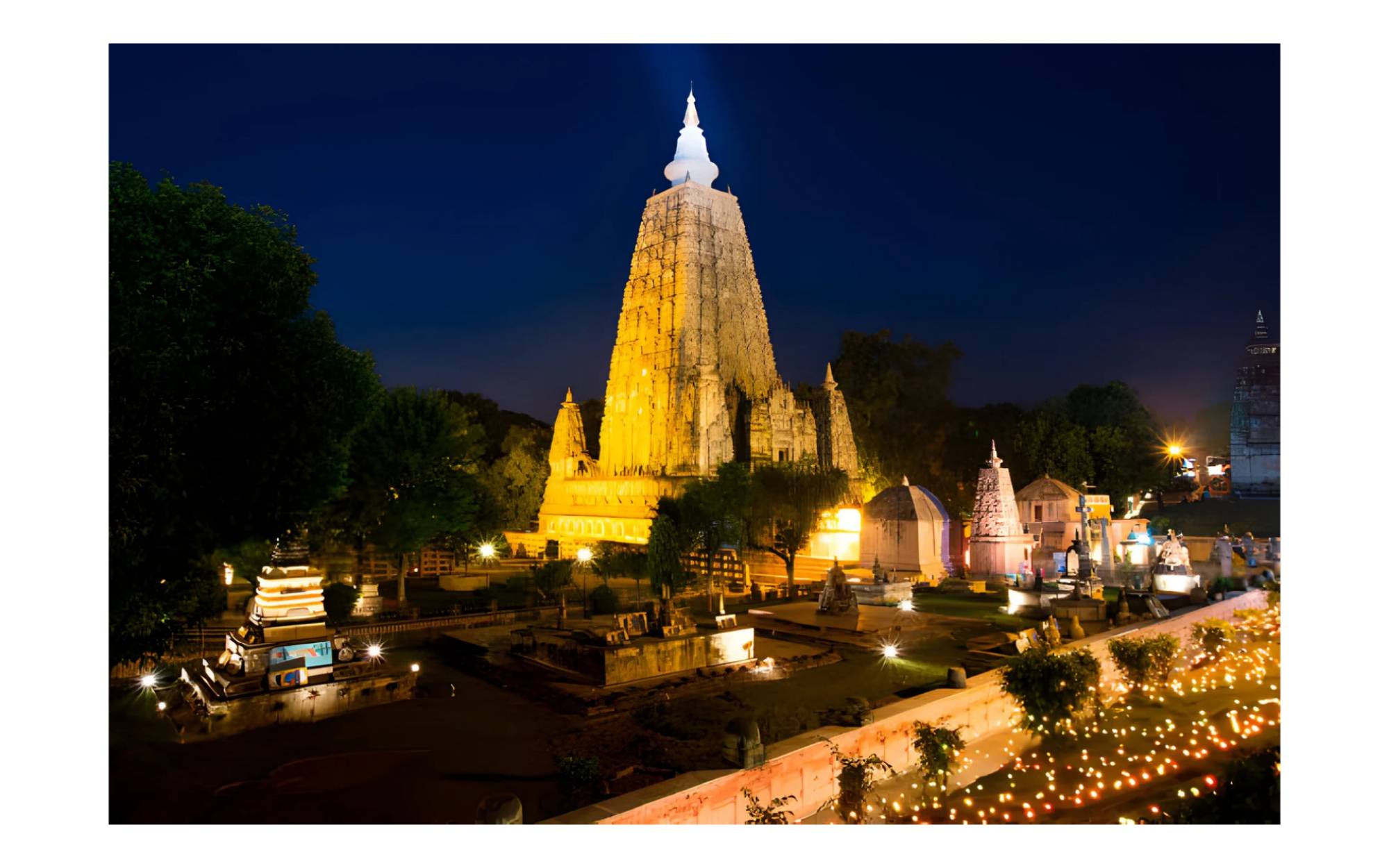
The Mahabodhi Temple Complex, located in Bodh Gaya, Bihar, India, is one of the most revered and ancient Buddhist pilgrimage sites. This sacred complex is the place where Siddhartha Gautama, the Buddha, attained enlightenment under the Bodhi Tree. Recognized as a UNESCO World Heritage Site, the Mahabodhi Temple Complex is not only a symbol of spiritual significance but also a remarkable architectural marvel that attracts millions of visitors and pilgrims from around the world. Cunningham's extensive travels across India and meticulous documentation of ancient ruins and inscriptions led to the rediscovery of several key Buddhist sites. His work was instrumental in identifying and restoring many lost or neglected monuments, which had fallen into disrepair over centuries of neglect and changing political landscapes. Mahabodhi Temple, Bodh Gaya Initial Exploration: In the 1880s, Cunningham conducted a detailed survey of the Mahabodhi Temple Complex. His research highlighted the temple's historical and spiritual significance as the site of Buddha's enlightenment. Restoration Efforts: Cunningham's findings prompted the first significant restoration efforts to preserve the temple. He advocated for the repair of the main structure and the preservation of the Bodhi Tree, emphasizing the need to protect this sacred site for future generations. Documentation and Preservation: His detailed documentation of the temple's architectural features, inscriptions, and sculptures provided valuable insights into its historical context and guided subsequent restoration projects.
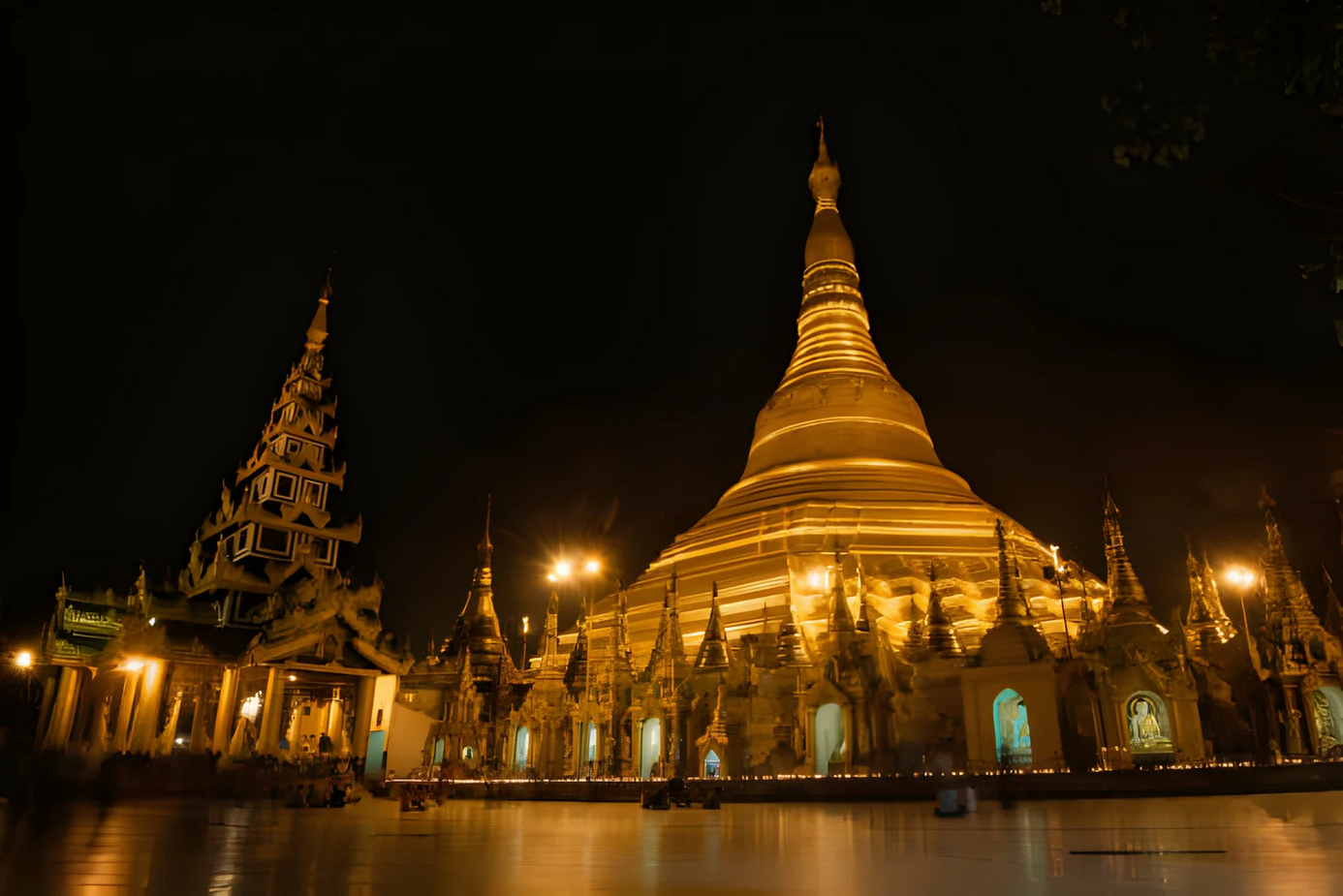
The Shwedagon Pagoda, also known as the Great Dagon Pagoda or the Golden Pagoda, is one of the most famous and revered religious sites in Myanmar. Here are some detailed aspects about this iconic structure. The Shwedagon Pagoda is believed to be over 2,600 years old, making it one of the oldest pagodas in the world. According to legend, it was built during the time of the Buddha and enshrines sacred relics, including strands of the Buddha's hair.The Shwedagon Pagoda is not only an architectural masterpiece but also a beacon of faith and cultural pride for the people of Myanmar. Its golden splendor and historical significance continue to inspire awe and reverence among all who visit.
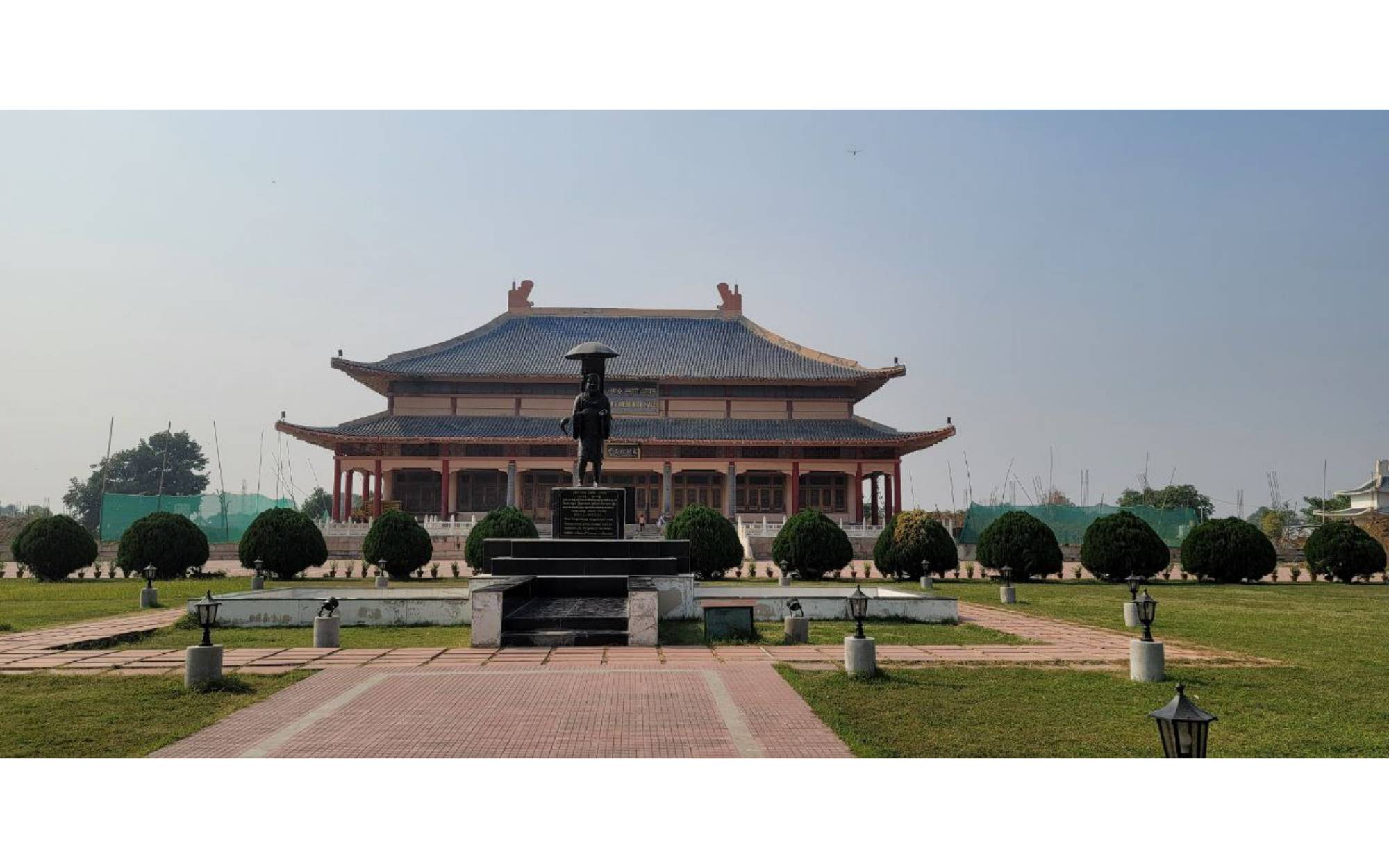
Hiuen Tsang, also known as Xuanzang, was a renowned Chinese Buddhist monk, scholar, traveler, and translator who traveled to India in the 7th century. His pilgrimage to India to study Buddhism and collect sacred texts is legendary. In honor of his contributions and enduring legacy, the Hiuen Tsang Memorial Hall in Nalanda stands as a tribute to his journey and scholarly achievements.The Hiuen Tsang Memorial Hall stands as a testament to the enduring legacy of one of history’s greatest scholars. It not only commemorates Hiuen Tsang’s contributions but also fosters cultural understanding and educational enrichment. Visiting this memorial offers a unique glimpse into the rich history of Nalanda and the profound impact of Hiuen Tsang’s journey.
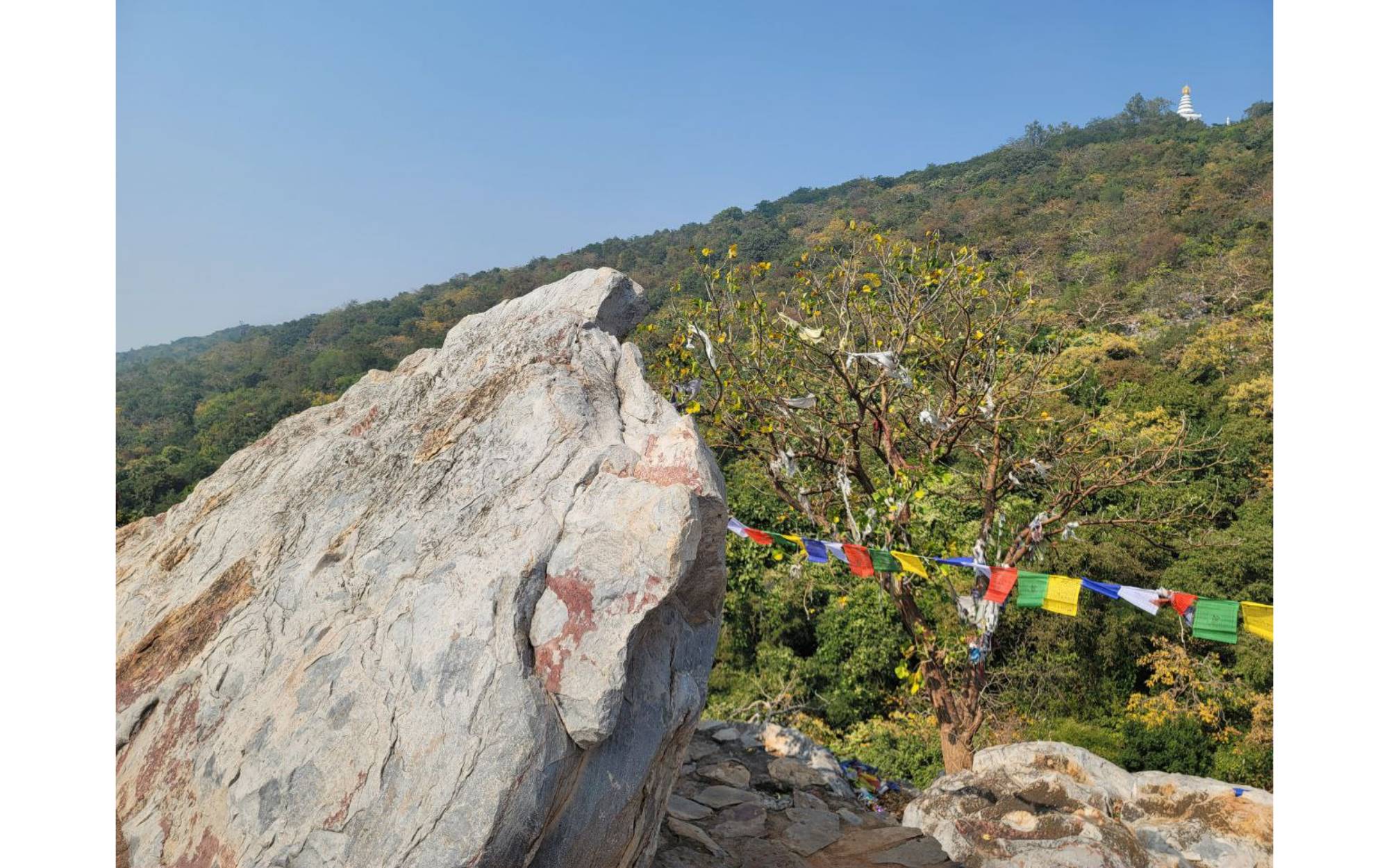
Vulture Peak, known as Gijjhakuta in Pali and Gṛdhrakūṭa in Sanskrit, is one of the most revered sites in Buddhist tradition. Nestled in the Rajgir hills of Bihar, India, this mountain is renowned for its association with the Buddha, who spent a significant part of his life here. Vulture Peak is famed for being the site where the Buddha delivered some of his most important teachings, including the Lotus Sutra. Its rich historical and spiritual legacy continues to draw pilgrims and tourists from around the world. Historical Significance Vulture Peak holds a distinguished place in Buddhist history. It is frequently mentioned in early Buddhist texts as a favored retreat of the Buddha. According to tradition, it was here that the Buddha delivered many key sermons, profoundly influencing the development of Mahayana Buddhism. One of the most notable events is the Buddha's delivery of the Lotus Sutra, which has become a cornerstone of Mahayana Buddhist doctrine. This site also saw the Buddha's interactions with his disciples, including notable figures like Ananda and Sariputta. The mountain's name, derived from its vulture-like shape and the presence of actual vultures, adds to its mystique and significance. Vulture Peak stands as a testament to the enduring legacy of the Buddha and his teachings. Its historical, geographical, and cultural significance make it a unique and revered site in the Buddhist world. As a place where profound wisdom was shared and deep spiritual practices were cultivated, Vulture Peak continues to inspire and attract those seeking enlightenment and a deeper understanding of Buddhist philosophy. Its timeless relevance ensures that it will remain a cherished landmark for generations to come.
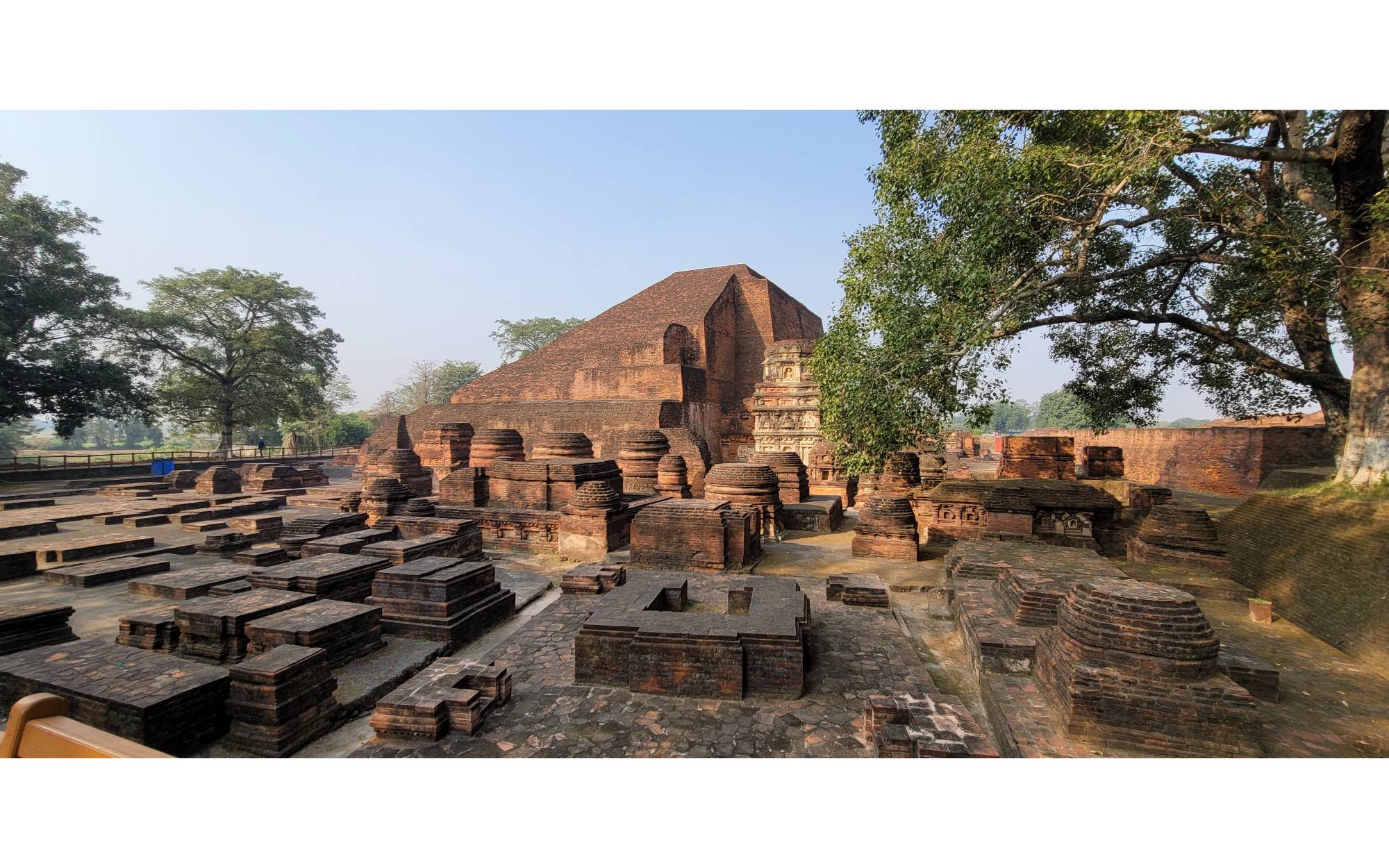
Nalanda, a large Buddhist monastery, now in ruins, was one of the most publicly acknowledged Mahaviharas of ancient India located in ancient Magadha kingdom (modern Bihar). It remained a learning centre from 7th century BCE through c. 1200 CE and is many a time categorised as one of the early universities of India along with other institutions like ‘Vikramashila’ and ‘Taxila’. The patronage of the Gupta Empire saw this Mahavihara prosper during 5th and 6th century as also during the reign of emperor Harsha of Kannauj. However tantric developments of Buddhism during the Pala rule saw an eventual decline of Nalanda. Students and scholars from places like China, Central Asia, Korea and Tibet studied in this great vihara that taught Mahayana, Hinayana, Sanskrit grammar, Vedas and Samkhya among others. Imminent pilgrim monks like Hiuen Tsang and I-tsing from East Asia visited this place in the 7th century. Recognised by UNESCO as a World Heritage Site, Nalanda not only boasts of being one of the most revered Buddhist tourism sites in India but also continues to draw attention from scholars, historians and archaeologists.
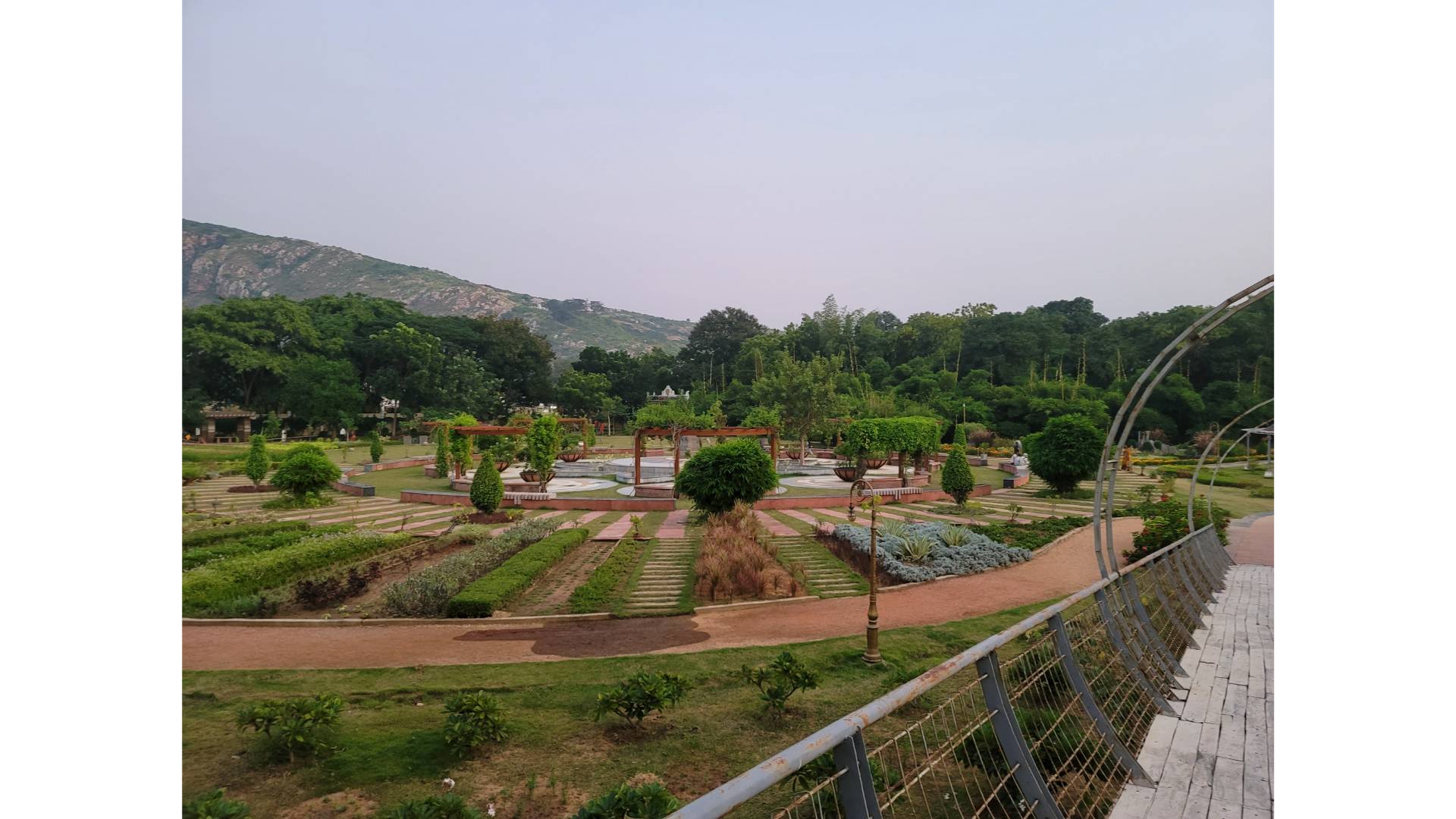
Venuban, located in the historic district of Nalanda in Bihar, India, is a place of profound historical and spiritual significance. This serene grove is not only a beautiful natural retreat but also a pivotal site in Buddhist history. It offers a glimpse into the life and teachings of Lord Buddha and the rich cultural heritage of ancient India. Venuban, also known as Veluvana or Bamboo Grove, is closely associated with the life of Buddha. It is believed to be one of the first donations to the Buddhist Sangha, given by King Bimbisara of Magadha. This grove served as a retreat for Buddha and his disciples, where they spent many monsoon seasons. The peaceful environment of Venuban provided an ideal setting for meditation and the propagation of Buddha’s teachings. Venuban, Nalanda, stands as a testament to the enduring legacy of Buddhism and the historical richness of ancient India. Its serene environment, coupled with its profound historical and spiritual significance, makes it a unique destination. Whether you are a history enthusiast, a spiritual seeker, or simply someone who appreciates natural beauty, Venuban offers a unique and enriching experience.
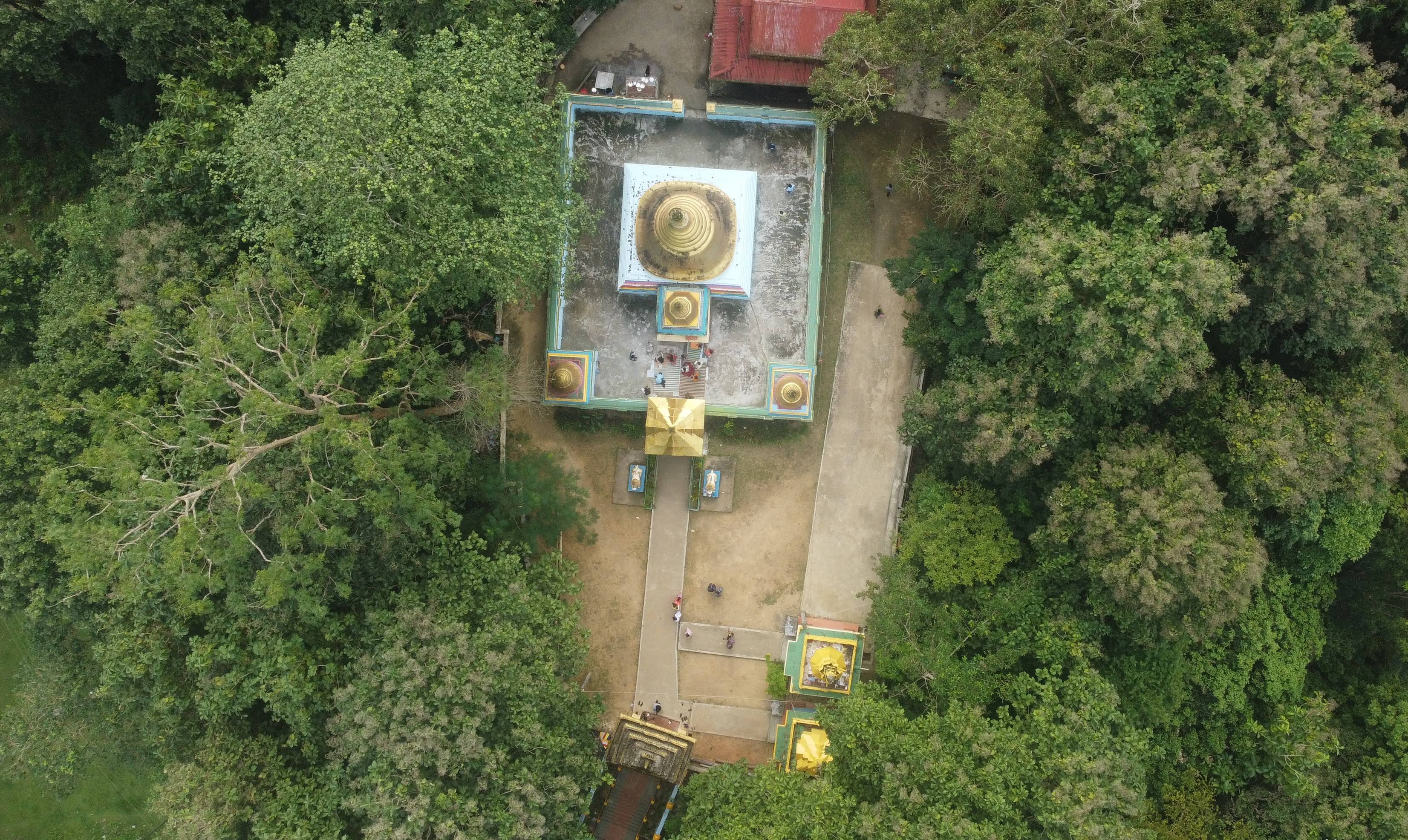
Chitmorom Buddhist Monastery, also known as Chit Moharom Buddha Bihar, is a significant religious site located in the Chittagong Hill Tracts of Bangladesh. The Buddhist Vihara is located in Chitpuram Union No. 3 of Kaptai Upazila under Rangamati District of Chittagong [Bangladesh] Division. Bihar is located at a distance of 45 km from Chittagong headquarters. This monastery is renowned for its serene environment and its role as a center for Buddhist worship and cultural activities. The monastery is an important pilgrimage destination for Buddhists in Bangladesh and neighboring countries.
